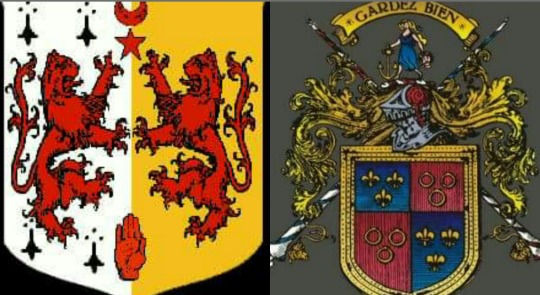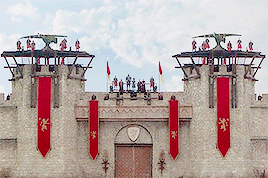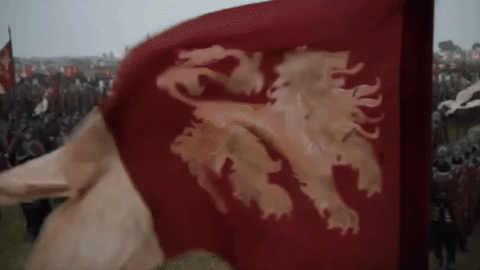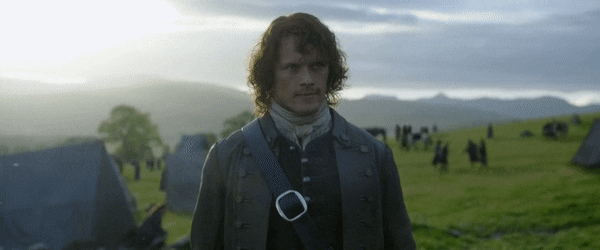Don't wanna be here? Send us removal request.
Text
[Caught by Penguin’s goons and tied to chairs in a warehouse, waiting for the cavalry]
Red Robin: I’m gonna say it. Shakespeare is overrated.
Red Hood: Ok, first of all: how dare you. Second of all: how DARE you?
Red Robin: He’s boring and Romeo and Juliet is ridiculous bullshit.
Red Hood: Counterpoint. Romeo and Juliet was always meant to be satire and if you read it with the knowledge that teenagers are idiots it’s actually a fantastic, mean commentary on teenage romance.
Red Robin: The only way I’ll accept that argument is if he was purposefully making fun of a particular pair of teenagers that he knew in real life and “Romeo and Juliet” was really Shakespeare being petty and mocking his cousin or something.
Red Hood: You- yeah that would be great actually.
Red Robin: Right? Still, my original point stands: Shakespeare is given way too much credit. So he invented some words. big whoop.
Red Hood: He basically invented the English language!
Red Robin: He better have considering the lenght of some of the monologues.
Red Hood: Look, thanks to Shakespeare we get to study dick jokes in school. There are so many dick jokes! How can you NOT like him?
Red Robin: One would think you’d be over Dick jokes, growing up in our family.
Red Hood: Well where do you think I get most of my material??
Red Robin: I’ll concede that Macbeth is okay, but the rest of his tragedies? I mean, Hamlet? More like Ham-let-me-out-of-this-AP-English-class
Red Hood: One, that was sub-par and I expect better from you. Two; are you seriously going after HAMLET?
Red Robin: [snorts] Of COURSE you would enjoy a play about a death-obsessed dude with daddy issues and a thirst for revenge.
Red Hood: OK, POINT! But I’m still HELLA insulted. And Shakespeare is a master at exploring the human condition!
Red Robin: [rolls his eyes]
Red Hood: [to one of the Henchmen guarding them] Hey, you! With the ski-mask and bad enough judgement to wear sneakers to a gunfight!
Henchman: Uh… yea?
Red Hood: Back me up here. Shakespeare is a cultural icon.
Henchman: well, uh, he always kinda bored me in school
Red Robin: A-HA!
Red Hood: Oh shut up. Since when are Penguin’s goons the go-to authority on literature
Red Robin: Since Shakespeare gets way too much credit because of fanboys like you.
Red Hood: Says the man who CRIED about the Hobbit movies. Several times.
Red Robin: THEY RUINED IT. EXCELLENT PRECEDENCE, EXCELLENT SOURCE MATERIAL AND THEY-
Boss Henchman: [barges in] what the fuck is going on in here? Who’s making so much fucking noise?
Red Hood: [inclines his head towards Red Robin] Red Robin here thinks Shakespeare is overrated.
Boss Henchman: [immidiately involved] YOU’RE INSULTING THE BARD? HE BASICALLY INVENTED THE ENGLISH LANGUAGE
Red Hood: [mimicking Red Robin] A-HA!
Red Robin: Look, if you want to stan an author who made a comedy about gaslighting and subjugating a woman through marriage be my guest but I’m different
Boss Henchman: That’s a bullshit argument
Henchman #2 -a woman: Nah, he’s got a legit point.
Red Robin: Thank you!
Red Hood: One bad play doesn’t mean you can diminish the impact of his work as a whole
Red Robin: Oh CAN’T I?
Boss Henchman: I will not stand here and see the Bard slighted in my own house- warehouse- whatever!
—–20 minutes later—–
Boss Henchman: -HISTORICAL CONTEXT
Red Robin: SOUNDS LIKE SOMETHING A SEXIST APOLOGIST WOULD SAY
Red Hood: THAT’S NOT EVEN-
—–40 minutes later—–
Boss Henchman: SHAKESPEARE SHOWED ME THAT WORDS CAN BE BEAUTIFUL
Henchman #1: I WENT TO AN ALL BOYS SCHOOL!! THEY MADE ME PLAY JULIET DO YOU EVEN KNOW HOW MUCH SHIT I GOT ON THE STREETS
—–70 minutes later—–
Red Hood: YOUNG LEONARDO DI CAPRIO WAS A LEGIT SNACC AND IF YOU SAY ANYTHING ELSE YOU’RE LYING
Red Robin: SO WATCH GANGS OF NEW YORK AT LEAST THAT’S INTERESTING
—–90 minutes later—–
Red Robin: THE FUCKING BARREL SCENE!! WHAT EVEN WAS THAT?!!
—–2 hours later—–
Red Hood: HE TAUGHT HISTORY TO THE MASSES!
Red Robin: HE TAUGHT ME HOW TO SLEEP IN CLASS WITHOUT GETTING CAUGHT IS WHAT HE DID
—–2,5 hours later—–
Boss Henchman: [pointing a gun at Henchman #1] HOW DARE YOU CALL OTHELLO A LI'L BITCH-
Henchman #2: [Hits Boss Henchman over the head with a chair] JUSTICE FOR KATHERINA
Red Robin: [Cheering] GET HIM, SUSAN
—–4 hours later—–
——The Batcave——
Bruce: [tiredly, rubbing the bridge of his nose] Ok, tell me again how you managed to escape.
Tim and Jason: [glancing at each other]
Tim: First off, I’d like to state for the record that we had everything perfectly under control.
12K notes
·
View notes
Text
Character: is a white man. That’s it.
Fandom: how dare you dislike this jewish-coded femme-coded female-coded gay-coded disabled-coded mentally ill-coded icon
27K notes
·
View notes
Text
Honestly, I feel like they had Adam become a big villain at the last second because Cinder wasn’t enough of a threat and was always just making vague mumblings about her mysterious plans without actually ever developing the audience’s knowledge on it, Roman was stealing more of the spotlight and was a far more personal and intimate and real villain than she was, but he was going to be killed off, so they went with another established character who had yet to truly make an appearance and decided he may as well become another threat since none of their others would be lasting long.
That’s the only explanation that makes “sense” to me of how and why they would butcher a character that was built up to be a complex, morally-gray anti-villain or antagonist, instead of just an outright villain who suddenly no longer cared about Faunus rights and his sole focus became ruining humanity and Blake’s happiness.
19 notes
·
View notes
Text
SO I WAS LOOKING AT A CLONE TROOPER NAME GENERATOR AND-



2K notes
·
View notes
Text
There’s worldbuilding and then there’s “developing the evolutionary lines of an entire ecosystem for your alien world” building

14K notes
·
View notes
Text
safe places to leave your heart:
the sea
empty churches
lilac groves
graveyards at night
old libraries
dusty used bookstores
sundappled shades of yellow, green, and pink
books of poetry
rose gardens
the sleeve of your last lover
a knot of willow branches
a misty morning in early summer
floral print
in the company of a cat
a sunrise or a sunset
deep green forests
49K notes
·
View notes
Text
“Here are three elements we often see in town names: If a town ends in “-by”, it was originally a farmstead or a small village where some of the Viking invaders settled. The first part of the name sometimes referred to the person who owned the farm - Grimsby was “Grim’s village”. Derby was “a village where deer were found”. The word “by” still means “town” in Danish. If a town ends in “-ing”, it tells us about the people who lived there. Reading means “The people of Reada”, in other words “Reada’s family or tribe”. We don’t know who Reada was, but his name means “red one”, so he probably had red hair. If a town ends in “-caster” or “-chester”, it was originally a Roman fort or town. The word comes from a Latin words “castra”, meaning a camp or fortification. The first part of the name is usually the name of the locality where the fort was built. So Lancaster, for example, is “the Roman fort on the River Lune”.”
— A Little Book of Language by David Crystal, page 173. (via linguaphilioist)
34K notes
·
View notes
Text
How to Write a Synopsis
Back when I was doing my MA program, I typed up a guide to writing query letters. It’s the post from this blog that I’m most proud of: a thorough step-by-step guide that combines days and weeks of research, and dozens of sources, into a neatly packaged 1,800-word post.
And I have to admit, I didn’t write it for tumblr. I needed to write a query letter myself for a publishing class, and my post was little more than compiled homework notes, saved as a Tumblr post for posterity.
I’ve actually had pieces of this in my drafts for years, but now I actually have to write a synopsis and I’m piling up the research, so I thought it was finally time for the sister to my query post to be published here.
But first…
What is a synopsis?
A synopsis is a 1-2 page summary of the events that transpire in a book, either proposed or already written. It’s used to give people who haven’t read your book a quick overview, so they know the story that’s being told in the book without having to read it.
When is a synopsis necessary?
Some literary agents request synopses along with query letters. More often, they’re used slightly later on in a writer’s career, when they have an agent or an editor and they need to submit a proposal for a new idea or project. A synopsis can also be used later on, in situations that don’t involve the author. For instance, when an editor pitches the book to the marketing and publicity team, who may not have time to read every book they’re working on. Unlike a query letter, the book doesn’t necessarily have to be written when you’re submitting its synopsis.
Basic Style
The job of a synopsis is to lay out the story with little fuss and no frills. They let the person you’re pitching know what they’re going to find in that giant stack of pages on their desk or in that obscenely long Word document (or else in the Word doc they’ll eventually receive).
Most professional synopses follow these rules:
They’re told in third person
They’re told in present tense
Characters’ names are CAPSLOCKED at first mention.
They are double spaced.
They tend to avoid descriptions longer than this sentence.
They focus on the central conflict and the protagonist’s emotional journey
They spoil the ending
They should be 500 words or less. (That is 1 page single-spaced, 2 pages double-spaced.)
HOW TO WRITE YOUR SYNOPSIS
The plot
Writing your synopsis, you have one goal: to tell a 50,000-100,000 word story in 500 words. It can be a little difficult to do this right. A great way to do this is to identify the key turning points in your protagonist’s story.
Do you remember those little plot roller coasters you’d make in elementary school? They’d usually be pointy witch’s-hat shaped things labeled with the terms: “beginning, rising action, climax, falling action, and resolution.”
Those turning points are the events you should be including in your synopsis.This is the structure you want to emphasize to your reader. You want to make abundantly clear that your story works like a story, that the events of your book have a beginning, a middle, and an end, that there’s an intriguing beginning, an exciting climax, a satisfying conclusion. You don’t want to just list out the events of your novel, but highlight the function of those events. X moment is important because it’s the inciting incident, the moment that takes the protagonist from their normal life and throws them into the story.
There are tons of great story roadmaps out there, that go into more specific story elements. The Hero’s Journey is the most famous example of a detailed, and mostly universal, story structure. There’s also the three-act structure that’s famous among screenwriters.
Find a structure that fits your story the best and use that to identify the events of your story that need to make it into your synopsis. I’ll link to different sources at the bottom of this post that will give you variations of story structure.
If you can correlate key scenes in your novel to the descriptions of these plot points, you’ll find an easy roadmap to navigating the many events of outlining your novel.
Your protagonist’s journey
Your protagonist is the heart of your story, and should be the heart of the synopsis, too. The protagonist’s emotional journey may not string all of these plot points together, but it’s going to be what makes them matter to the reader. The human element of your story has to be represented in your synopsis.
There’s no room for long descriptions, so you’ll have to be smart about finding a few terms that not only tell your reader who the character is, but what their story will be. For instance, if your story is about someone trying to get their critically-panned paintings in the Museum of Modern Art by breaking into the museum and installing the pieces themselves, you may want to introduce them with a sentence that begins like so: “When IGNATIUS, an ambitious and untalented struggling artist, discovers his work is rejected from yet another gallery…”
In addition to these descriptive terms, you should spell out what your protagonist wants (or wants desperately to avoid) and their stake in the events of the story.
Along the way, tell us how these key aspects of their persons change due to the events of the story, or else how they influence the events of the story. Tell us about how after raving reviews for his DIY MoMA exhibit came in, Iggy realized that though he still liked painting, his talents actually lay in performance art. Untalented to talented, struggling to successful, all because his ambition pushed him to try new and daring things.
Tips:
As in query letters, you only name the most important characters and locations outright. If you’re writing a synopsis for Harry Potter, you’ll want to use Harry’s name in the query, but most other people and places can be referred to by their function in the novel. Ex: Aunt Petunia and Uncle Vernon can be “his cruel relatives.” Hermione and Ron can be “his friends.” Even Hogwarts can be a “school for people with magical abilities.” This makes it easier for a reader to understand what’s going on in your story. Too many names in such a small amount of space can be overwhelming.
All telling, no showing. This is one piece of writing where you’ll want to tell, instead of show. You need to get to your point as quickly, as clearly, and concisely as possible; this isn’t the place for creative storytelling.
Oftentimes, synopses are given along with other materials, such as pitch letters and sample pages. While a synopsis should be captivating in-so-far that it’s well told, and it should maybe be a little stylish, being captivating and stylish aren’t its main goals. Additional materials like sample pages and pitches have more room for creative flourishes and can do a better job of selling the story, while the synopsis focuses on telling it.
Your synopsis should show that you know how to tell a story. While a synopsis doesn’t sell a story like a query, it should still illustrate the fact that you have an interesting, unique and well-structured plot. When finished, your reader should be able to think to themselves “that’s a good story. I want to read that.”
Your first draft will be too long. Your first draft of a synopsis will always be at least a page or two longer than it should be. Identify the sentences and paragraphs where you explain why a thing happens and ax them. Identify sentences where you repeat yourself and ax them. Identify descriptors that aren’t vital to understanding of the story and ax them. Once you make your first painful cuts and see that the story still makes sense without those things, you’ll start to get a better understanding of what can and cannot be taken out of your synopsis.
Bibliography:
6 Steps for Writing a Book Synopsis
How to Write a 1 Page Synopsis
The Hero’s Journey
Learn How to Write a Synopsis Like a Pro
How to Write a Novel Synopsis
The Secrets of Story Structure
Three Awesome Plot Structures for Building Bestsellers
7 Ways Write Plot Outline
Synopsis for “Bill and Ted’s Excellent Adventure”
How to Plan Your Novel Using a 3 Act Structure - ex. “The Hunger Games”
Story Structure by Plot Point for “Raiders of the Lost Ark”
8K notes
·
View notes
Note
How do you find inspiration to write?
FINDING INSPIRATION

By this definition, there are two different types of inspiration. Lets look at the second one first, because it’s the easier to talk about.
Inspiration as a sudden stroke of brilliance.
This is the kind of inspiration a lot of people think of when they consider the world. It’s the muse, the genius. It’s that moment when you’re not expecting enlightenment but it hits you anyway, with such force that you have to race to your keyboard or art pad or so-forth to let the creativity flow out so you don’t explore from it.
It’s also completely and entirely unpredictable. You can’t force yourself to have this sort of inspiration.
It’s also not the mark of a Good Creator to have this kind of inspiration. Most of the best works ever made were made without the slightest touch of sudden brilliance.
This sort of inspiration is lovely to feel and it’s empowering to work under, but it’s irrelevant to the end result of a project. Good creations are not produced by sudden brilliance but by showing up and doing the work.
(For more about this, see Elizabeth Gilbert’s TED talk here)
Inspiration as a mental process.
This is a softer, less-spoken-of kind of inspiration. It’s the inspiration that comes from a painstakingly assembled pinterest board or playlist, the inspiration that takes time and effort to produce, the inspiration that doesn’t hit you over the head but fills you up, slowly, though energy and understanding of one’s self.
There are many ways to produce this inspiration, and each individual creator will only respond to some of them. Lets consider a few now:
Visuals. Having visuals that remind you of the thing you’re writing, drawing, etc, can spark inspiration for a lot of people, especially if they relay the atmosphere of the project, getting the creator in the mood for it.
Sound. Playlists with music that fits the type of creating, the project itself, or some particular aspect of the project, like a scene or a character, can be a fantastic source of inspiration and if you form a habit out of only listing to that music when you’re preparing for or actively creating that thing, it trains your brain to turn on “creating mode” so to speak.
Habit. In the same way, any sort of habit that’s specific to your creation process can be very useful: setting up your workplace in a creation only area, with the same background noise, a similar drink, a similar time of day, etc.
Meditation. Now, I don’t mean the sort of meditation where you drop everything from your head and float away from your body. I mean deliberate contemplation. Meditate on your project, on where it’s going and what it means to you, on the emotions it invokes and the reasons you chose to write it in the first place.
Interaction. Sometimes you have to start without any inspiration and by diving into your project you’ll gain that inspiration through your interaction with your creation. Maybe it’s work for the first five paragraphs or the first sketch, but as you find your flow and connect with that you’re doing it might just embrace you in return.
But remember: this sort of inspiration doesn’t come every time you want it. Even the most dedicated creators will lack it entirely some days, and that’s perfectly normal. Inspiration like this is a really nice bonus that can help you find joy in shaping your creation, but it, like sudden brilliance, isn’t necessary to the creative process. It’s just a nice bonus.
Tell me, what methods do you personally use to find inspiration? Reply in the comments!
341 notes
·
View notes
Text
Fantasy Guide to Heraldry, Sigils and Coats of Arms
We love our banners and flags. They make a battle field bright, they light up a hall, they look great piled on a courtyard after being pulled down by one victorious lady and dashing bastard. Ah, the good old days.

These are my coats of arms, which technically I cannot have because I too am a bastard. But hey, I can dream. So lets get to it.
Major Divisions of the Field

These are the ways that different parts of the arms can be divided off from each other. Some banners and arms can contain multiple divisions depending on how many titles the person owns.
Chequy : Checker squares
Fess: horizontal stripe across the shield Pale: vertical stripe down the shield
Bend: diagonal stripe
Chevron: like a house gable, pointing upwards
Cross: a plain cross
Saltire: a ‘St. Andrew’s cross’
Chief: bar across top edge of shield
Bordure: border round edges of shield
Pile: downward-pointing triangle
Engrailed: with semi-circular bites taken out of the charge
Embattled: shaped like battlements.
Dancetty: larger zig-zags
Wavy: undulations
Nebuly: more pronounced waves
Rayonné, rayonny: shaped the rays of the sun, sort of like the Karstark sunburst.
Bevilled: with a single offset or bevel.
Quartered: A section of the shield is a different colour to the others.
Gyron: A triangular charge, half a canton.
Flaunches or flanches: These are curved “bites” taken out of the sides of the shield.
Canton: Like the quarter, it sections off some of the banner. But only one-ninth of the shield.
Tincture

Or colours. In many fantasy novels, we have banners of different colours or thousands of shades. But in heraldry, there are certain colours and each have their own fancy French name.
Silver / White : Or the proper name, Argent. Means truth, sincerity, peace, innocence and purity.
Gold: Called Or. Stands for wisdom, generosity, glory, constancy and faith.
Black: Called Sable. Means wisdom, grief, constancy and prudence.
Green: called Vert. Means abundance, joy, hope and loyalty in love.
Blue: Strangely not called bleu but rather Azure. Stands for loyalty, chastity, truth, strength and faith.
Red: Another strange one. Referred to as Gules. Means magnanimity, military strength, warrior and martyr.
Purple: Called Purpure and it means temperance, regal, justice, royal majesty, and sovereignty.
Orange: is called Tenne / Tawny. Means ambition.
Ermine: Black and white.
The one rule of Tincture is that you never even put two metal colours together. So no silver banners with gold.
Positions of the Heraldic Beasts

If your banners and arms feature a critter, than your creatures have to learn how to stand. There are many positions within the arms that the beast can take.
Statant: all four feet on the ground
Salient: The forelegs off the ground and the backlegs on the ground
Rampant: Rearing with a single leg on the ground
Passant: Standing with one foot raised
Sejant Erect: Stop chuckling. The beast is sitting but has its forelegs raised
Couchant: Lying down and head raised.
Dormant: Lying down, asleep.
Lodged : Lying, with the legs tucked under the body
Trippant: Walking, with one foreleg slightly raised
Courant: Running
Springing: Leaping or jumping, with the hind legs on the ground (the term for a herbivore animal)
For the Birds
Displayed: facing out from the shield, the wings fully extended
Close: standing on the ground with the wings folded.
Perched: perched on an object like a branch.
Rousant: about to take wing.
Soaring: Flying upwards.
Volant: Flying more or less horizontally
Non-Beastly Charges
You don’t need to have animals on your banners. Sometimes a good old shape will do.

Bordure or border: runs round the edge of the shield; often it is used to difference arms, for instance for separate branches of the same family.
Orle: is narrower than the bordure.
Lozenge: Diamond shaped.
Fusil: A narrower lozenge
Tressure: A double orle treated as a single charge.
Roundles: These are discs which can be of different colours, which each bring different terms.
Byzantine: gold
Argent/ Plate: silver
sable: pellet
Pomme: apple
Annulets: are roundles with a hollow centre like rings.
Fret: an interwoven design of six pieces.
The Laws of Heraldry

Sometimes when the arms can change depending on who in the family is using the banner. They might add a certain symbol or even the shape of the banner to denote who that person is in the family. This is called cadency.
Bastards and illegitimate children are not permitted to carry their parents arms. However they can have similar arms if the colours are reversed and there might even be a bend sinister on the shield.
The main charge should cover its field
Do not display a tincture on top of another tincture, or colour on colour; you cannot have vert on azure without a metal splitting them.
4K notes
·
View notes
Text
Things to Consider When Creating a Fictional Mythology
How many gods and goddesses are there?
How are the gods and goddesses related to each other? How similar are these relationships similar to human ones?
Is there a ‘chief’ god? What makes them the strongest one? Have they always been the strongest?
How much do the gods meddle with human affairs? What motivates them to get involved?
Can humans have kids with gods? What special abilities to these kids have? How are they viewed by society?
Do humans pray, make offerings, or do other things to try to appease the gods?
Do people and/or societies tend to worship one god or goddess at a time, a handful that reflect their interests and priorities, or the whole pantheon? How does this vary between people and cultures? How do people who worship different gods or worship them to different degrees interact?
Which gods are the most widely revered?
What is the mythology’s creation myth? How does that reflect society’s values?
What traits does the mythology tend to idolize? What does it demonize? Have people’s interpretations of these things changed over time?
Who are the main, famous heroes of this mythology? What makes them so well regarded?
Do gods have different names, personalities, or physical portrayals in different cultures?
Have details about some gods been lost over time?
Do gods and goddesses look like humans? Animals? Something else entirely?
How have various myths been sanitized over time to make them more tame or child friendly? How many different versions of each myth are there?
2K notes
·
View notes
Text
“Magic exists. Who can doubt it, when there are rainbows and wildflowers, the music of the wind and the silence of the stars? Anyone who has loved has been touched by magic. It is such a simple and such an extraordinary part of the lives we live.”
—
Nora Roberts
(via quotefeeling)
2K notes
·
View notes
Text

‘She felt his knuckles slide against hers. Then his hand was in her hand, his palm pressed against her own. A tremor moved through him. Slowly, he let their fingers entwine.
For a long while, they stood there, hands clasped, looking out at the gray expanse of the sea.’
Kaz and Inej - Six of Crows
4K notes
·
View notes
Text
me: *finishes Crooked Kingdom*
goodreads: you finished Crooked Kingdom. what’s next?
me, sobbing: I DON’T KNOW OKAY
2K notes
·
View notes



